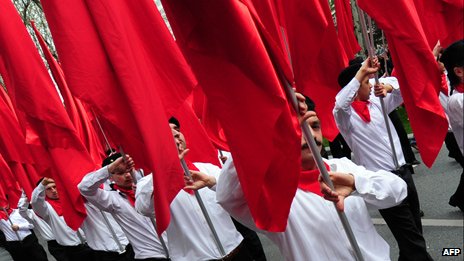Turkey’s extreme-left Revolutionary People’s Liberation Party-Front (DHKP-C) has waged a violent campaign for more than three decades.
 Ankara says the DHKP-C has killed dozens of police officers and soldiers along with more than 80 civilians since it was formed in 1978.
Ankara says the DHKP-C has killed dozens of police officers and soldiers along with more than 80 civilians since it was formed in 1978.
The banned group wants to replace the Turkish government with a Marxist one.
It also opposes what it calls US imperialism and has several times targeted US military personnel and diplomatic missions.
The DHKP-C is branded as a terror organisation by the US and the EU.
The group has claimed a suicide attack against the US embassy in Ankara which killed the bomber and a guard on 1 February 2013.
During the previous month, Turkish police made more than 80 arrests in raids targeting the group.
Among those detained were students, lawyers, reporters and even members of a pop group who were thought to have links with the DHKP-C.
The group was formed in 1978 as Dev-Sol (Revolutionary Left), a Marxist-Leninist splinter group from a larger group called Dev-Yol (Revolutionary Path). It changed its name to DHKP-C in 1994.
In its early years the group recruited supporters mainly in high schools and universities.
But analysts say its main power-base is among the urban poor.
In 2000, the group spearheaded a long-running hunger strike in Turkish prisons over the introduction of high-security jails.
More than 60 people died in the prison protest, most of them DHKP-C members. Another 30 inmates were killed when the army stormed prisons in December 2000 to end the campaign.
The group has been blamed for the killings of two retired generals, a former justice minister and a prominent businessman.
Experts say that during the 2000s the DHKP-C tried to gain prominence by imitating the tactics of al-Qaeda.
But many of its senior figures fled abroad following Turkish police raids in 2004.
The group’s founding leader Dursun Karatas spent years in exile after escaping from an Istanbul prison in 1989. He died of cancer in the Netherlands 2008.
BBC















